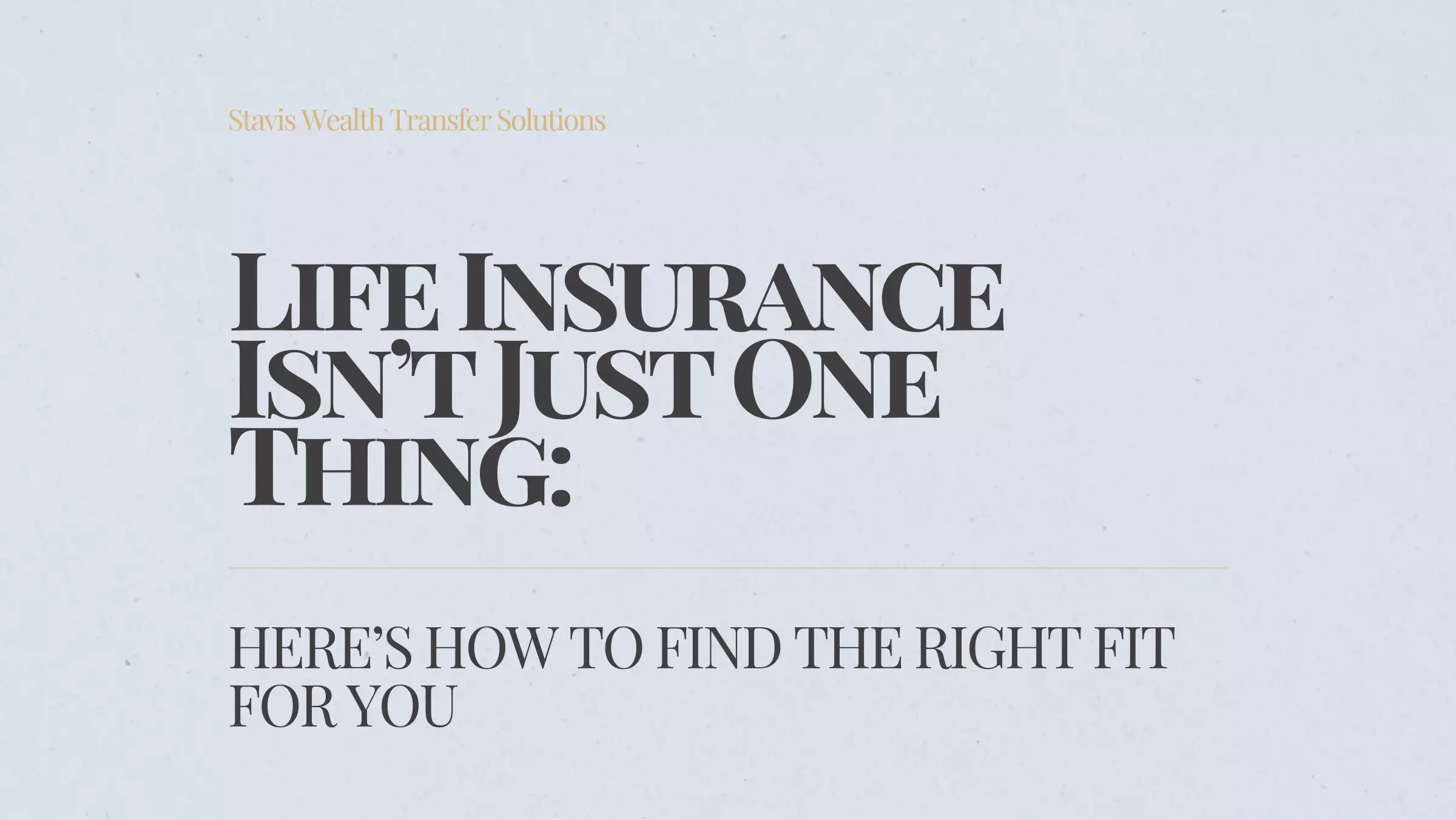Life Insurance Isn’t Just One Thing. Here’s How to Find the Right Fit for You.
21st July 2025

Most people think of life insurance as something you buy once and forget about. Most commonly, this involves purchasing term insurance to cover the mortgage or raise the kids in case something happens.
But if that’s all you think life insurance can do, you’re missing the bigger picture.
Life insurance is a lot like investing. There are simple, off-the-shelf options. There are more complex strategies for growth, wealth transfer, or legacy planning. And then there are highly tailored solutions for families and individuals with specific goals or unique circumstances.
Understanding the types of life insurance available, and which one fits your needs, isn’t just a box to check. It’s a powerful step in aligning your financial life with the future you want to build.
A Tale of Two Policies
Let’s start with two people:
- Melissa, a 38-year-old marketing executive with two kids and a mortgage, wants to make sure her family is protected if something unexpected happens.
- David, a 62-year-old entrepreneur who recently sold his business, wants to transfer wealth to his grandchildren in the most tax-efficient way possible.
They both need life insurance. But they need entirely different types of policies.
Term Life: For What If, Not Forever
Melissa chose a 20-year term life insurance policy. It’s affordable, straightforward, and does exactly what she needs it to, protect her children until they’re financially independent.
Term life is like renting the insurance in that you pay for coverage over a set period (often 10, 20, or 30 years), and if you die during that term, your beneficiaries receive the death benefit. After that, the policy ends.
For many people, especially younger families, term life is a great place to start. It’s low-cost and high-impact. But it’s also temporary, and it doesn’t build cash value. That’s where permanent life insurance comes in.
Whole Life & Universal Life: Built to Last
Permanent life insurance isn’t just about protection. It can also build equity in the form of cash value that grows over time, tax-deferred.
Whole life insurance is the most predictable of the bunch. You pay level premiums, and the policy builds cash value. It’s conservative, reliable, and designed to be there for your heirs no matter when you pass.
Universal life is a bit more flexible. It allows you to adjust your premiums and death benefit over time, which can be useful if your income or needs change. Some versions even offer the potential for higher cash value growth, though they also require more monitoring.
These policies are often used in estate planning, charitable giving, or as part of a broader wealth strategy. Which brings us to David.
When Insurance Becomes Strategy: Indexed, Variable, and PPLI
After the sale of his business, David was introduced to the idea of using life insurance not just for protection, but as a tool for tax-advantaged wealth accumulation and transfer.
In particular, his advisor recommended looking at Private Placement Life Insurance (PPLI).
PPLI is a specialized, institutional-level solution. It’s designed for high-net-worth individuals and families who want to invest in customized portfolios inside a life insurance policy, allowing the assets to grow tax-free and transfer to heirs without triggering income or capital gains tax. When set up properly in a generation skipping trust, this approach becomes an efficient way to structure multi-generational wealth transfer.
Unlike retail insurance products, PPLI isn’t sold at the kitchen table. It’s structured through private contracts, often using institutional or alternative investments. And it requires sophisticated planning around ownership, tax compliance, and investment control. But for someone like David, it offers a powerful combination of growth, privacy, and efficiency.
Other wealthy individuals might also consider Variable Universal Life (VUL) or Indexed Universal Life (IUL) policies. VUL allows you to invest cash value in market-based subaccounts, much like mutual funds, offering higher upside (and more risk). IUL, by contrast, credits interest based on the performance of a market index like the S&P 500, but with built-in downside protection.
Both can be used to generate tax-advantaged income later in life, or as part of executive compensation and retirement strategies.
Matching the Policy to the Purpose
There’s no “best” life insurance. Just the right tool for the job.
- Term might protect your family during your working years.
- Whole life might anchor a legacy or provide stable, long-term value.
- Universal life might flex with your changing needs.
- IUL or VUL might fund retirement or support business planning.
- PPLI might preserve and grow multi-generational wealth.
Some people own just one policy. Others layer multiple types for different planning needs at different life stages. What matters most is clarity: understanding what your policy is designed to do and whether it’s still the right fit.
One More Thing: Don’t Set It and Forget It
Just like your goals evolve, your insurance strategy should too. That’s why we always recommend reviewing your coverage regularly, especially if it’s been a few years, or your life has changed.
Marriage, children, divorce, retirement, selling a business, new investments, or cross-border moves can all trigger the need for a policy review. And for those with advanced strategies like PPLI, policy maintenance is just as important as setup.
Final Thoughts
Life insurance isn’t just about what happens when you’re gone. It’s about what you can build, protect, and pass on while you’re here.
Whether you're starting with a simple term policy or exploring sophisticated strategies like PPLI, the goal is the same - to use life insurance intentionally. As part of a smart financial plan. As a tool for growth. And as a way to turn uncertainty into clarity.